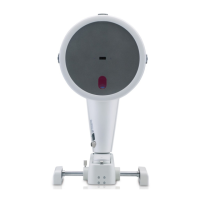3
16 INTACS® implantation...............................................................................................................117-122
16.1 Case 1: by Prof. Michael W. Belin....................................................................................................117
16.2 Case 2: INTACS® after PRK by Alain-Nicolas Gilg, MD............................................................ 119
16.3 Case 3: INTACS® & crosslinking by Prof. Renato Ambrósio Jr,
Fernando Faria-Correia, MD, Allan Luz, MD ................................................................................ 121
17 Holladay Report & Holladay EKR65 Detail Report by Jack T. Holladay, MD................123-136
17.1 Holladay Report....................................................................................................................................123
17.2 Holladay EKR65 Detail Report.........................................................................................................129
17.3 Case 1: Holladay Report & Holladay EKR65 Detail Report of a normal exam ..................130
17.4 Case 2: Holladay Report & Holladay EKR65 Detail Report of a keratoconus exam.........133
17.5 Case 3: Holladay Report & Holladay EKR65 Detail Report of a post LASIK exam............135
18 Corneal tomographic analysis is essential before cataract surgery -
4 steps in screening candidates for premium IOLs by Prof. Naoyuki Maeda............. 137-140
18.1 Corneal topography for selecting premium IOLs.......................................................................137
18.2 Step 1: Evaluation of corneal irregular astigmatism.................................................................140
18.3 Step 2: Detection of abnormal corneal shape ............................................................................ 140
18.4 Step 3: Evaluation of corneal spherical aberration ...................................................................140
18.5 Step 4: Evaluation of corneal cylinder ..........................................................................................140
19 Dependency of effective phacoemulsification time on Pentacam® Nucleus Staging (PNS)
by Mehdi Shajari, MD, Wolfgang Mayer, MD, Prof. Thomas Kohnen............................141-142
19.1 Introduction ..........................................................................................................................................141
19.2 Case 1: Low PNS and low EPT .........................................................................................................142
19.3 Case 2: High PNS and high EPT ......................................................................................................142
20 Total corneal astigmatism for toric IOL by Giacomo Savini, MD...................................143-148
20.1 Case 1: Cylinder overcorrection from measurement of keratometric astigmatism
in an eye with WTRA..........................................................................................................................144
20.2 Case 2: Cylinder undercorrection from measurement of keratometric astigmatism
in an eye with ATRA ...........................................................................................................................146
20.3 Case 3: Cylinder overcorrection from measurement of keratometric astigmatism .........147
21 Overview about IOL power calculation formulas for different eye types............................. 149
22 Phakic IOL implantation .........................................................................................................150-160
22.1 Manual pre-op simulation and post-op control by Eduardo Viteri, MD.............................150
22.1.1 Pre-operative evaluation...................................................................................................150
22.1.2 Post-operative evaluation.................................................................................................151
22.2 3D pIOL Simulation Software and Aging Prediction by Prof. Burkhard Dick,
Sabine Buchner, Optometrist............................................................................................................151
22.2.1 Myopic Artisan/Verisyse, 6/8.5 mm ................................................................................151
22.2.2 Toric Artisan/Verisyse, 5/8.5 mm ....................................................................................155
22.3 Patient selection criteria by Prof. Burkhard Dick,
Sabine Buchner, Optometrist............................................................................................................157
22.4 Case example of ectasia after LASIK, crosslinking and pIOL implantation
by Prof. Renato Ambrósio Jr, Fernando Faria-Correia, MD, Allan Luz, MD.........................159
Table of contents

